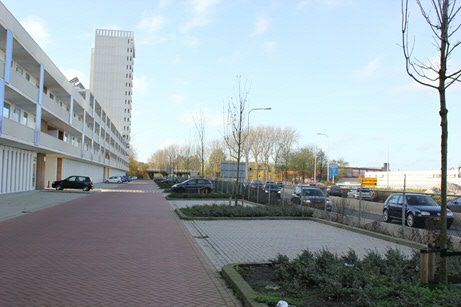Buurtgroen gezonder als het makkelijk toegankelijk en bruikbaar is

Bewoners van een wijk met veel toegankelijk en bruikbaar groen zijn meer gehecht aan het groen in hun buurt en voelen zich psychisch gezonder dan bewoners van een wijk met evenveel maar minder goed toegankelijk groen. Dat blijkt uit onderzoek van promovenda Yang Zhang van de Rijksuniversiteit Groningen onder 223 bewoners van de Groningse wijken Corpus den Hoorn-Noord en De Hoogte.
Er komen steeds meer aanwijzingen dat groen in de woonomgeving van mensen positieve effecten heeft op de leefbaarheid en de gezondheid van bewoners. Het is echter nog minder goed bekend hoe deze effecten precies tot stand komen, en welke kenmerken van het groen bijdragen aan deze effecten. Door middel van een vergelijkend onderzoek in wijken met verschillende groenkenmerken probeerde Zhang meer inzicht te krijgen in deze vragen. Zij ondervroeg bewoners over hun psychische en lichamelijke gezondheid en ontwikkelde een nieuwe schaal om de gehechtheid van de bewoners aan het groen in hun buurt in kaart te brengen.
Veel onbruikbaar groen langs spoorlijn
Zhang, promovenda bij de afdeling Planologie van de Faculteit Ruimtelijke Wetenschappen, selecteerde voor haar onderzoek de buurten Corpus den Hoorn-Noord en De Hoogte. Twee wijken met een vergelijkbare bevolking en eenzelfde hoeveelheid groen, maar met verschillende gebruikskwaliteit van dat groen. Het percentage groenoppervlak ligt in beide buurten rond de 25%. In De Hoogte bestaat echter meer dan de helft van het groen uit niet goed toegankelijk of beperkt bruikbaar groen, zoals groenstroken langs de spoorlijn. In Corpus den Hoorn-Noord is maar een kwart van het groen minder toegankelijk en bruikbaar.

Verbondenheid met groen sleutel tot gezondheid
Bewoners van de wijk met veel toegankelijk groen voelen zich vooral psychisch gezonder, constateerde Zhang. Zij vond geen verschillen in de lichamelijke of algemene gezondheid van de bewoners uit de twee wijken. ‘Die bevindingen komen overeen met de uitkomsten van eerder onderzoek. Groen heeft de meeste invloed op de psychische gezondheid’, zegt Agnes van den Berg, hoogleraar Beleving en waardering van natuur en landschap aan de RUG en begeleider van het onderzoek. Van den Berg vindt het bijzonder dat nu een relatie is aangetoond tussen het psychisch welzijn van de bewoners en hun gehechtheid aan het groen. ‘Dat suggereert dat verbondenheid met het groen een sleutelrol zou kunnen spelen in de gezondheidseffecten van dat groen.’
Volgens Van den Berg biedt het onderzoek van Zhang handvatten om mensen meer met het groen in hun buurt te verbinden. ‘Namelijk door er voor te zorgen dat het groen goed toegankelijk is en volop gebruikt kan worden. Op die manier veranderen groene ruimtes in groene plekken waar de bewoners een emotionele band mee kunnen opbouwen.’
Noot voor de redactie
- Contact: Yang Zhang (alleen in het Engels) of prof.dr. Agnes van den Berg
- Volledige publicatie: Green Space Attachment and Health: A Comparative Study in Two Urban Neighborhoods
- ww.agnesvandenberg.nl
Meer nieuws
-
01 december 2025
De kracht van beweging
-
24 november 2025
RUG en Ministerie van I&W starten brede meerjarige samenwerking
